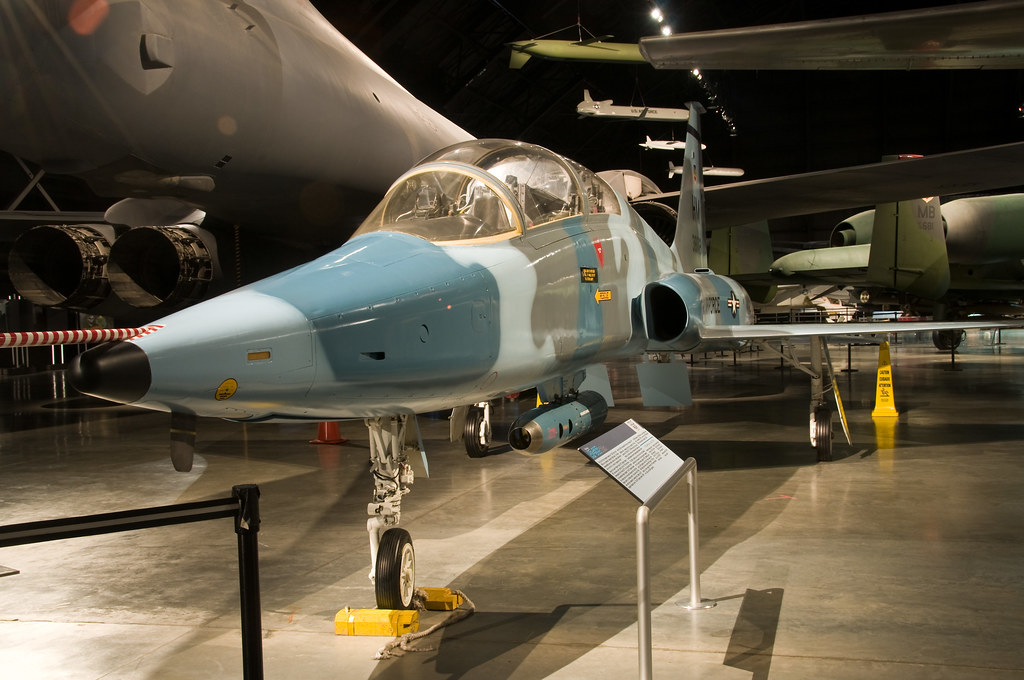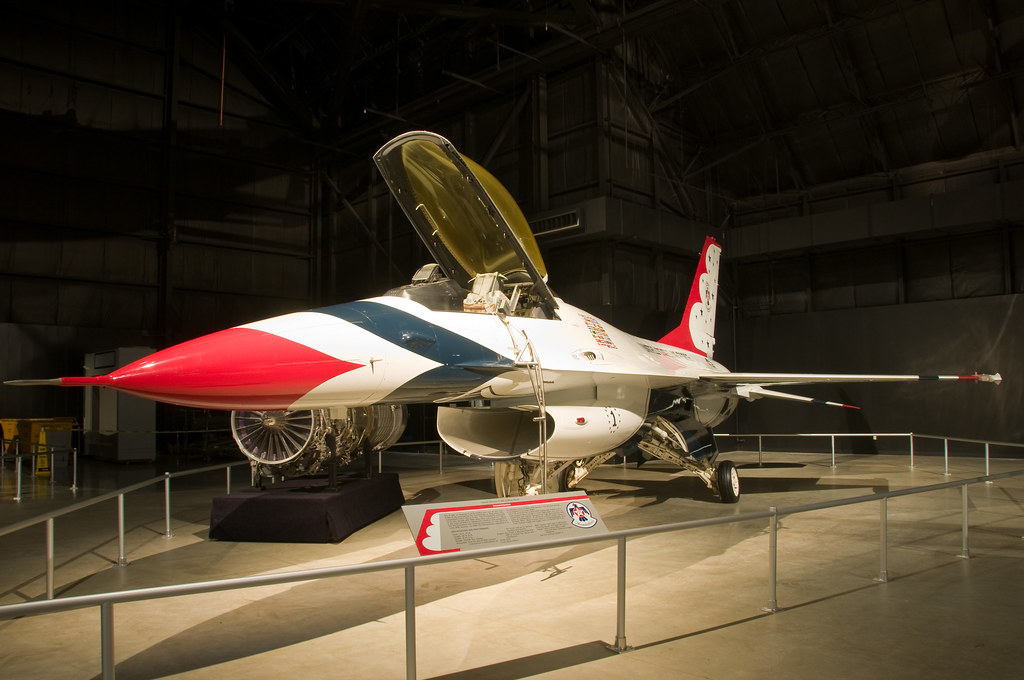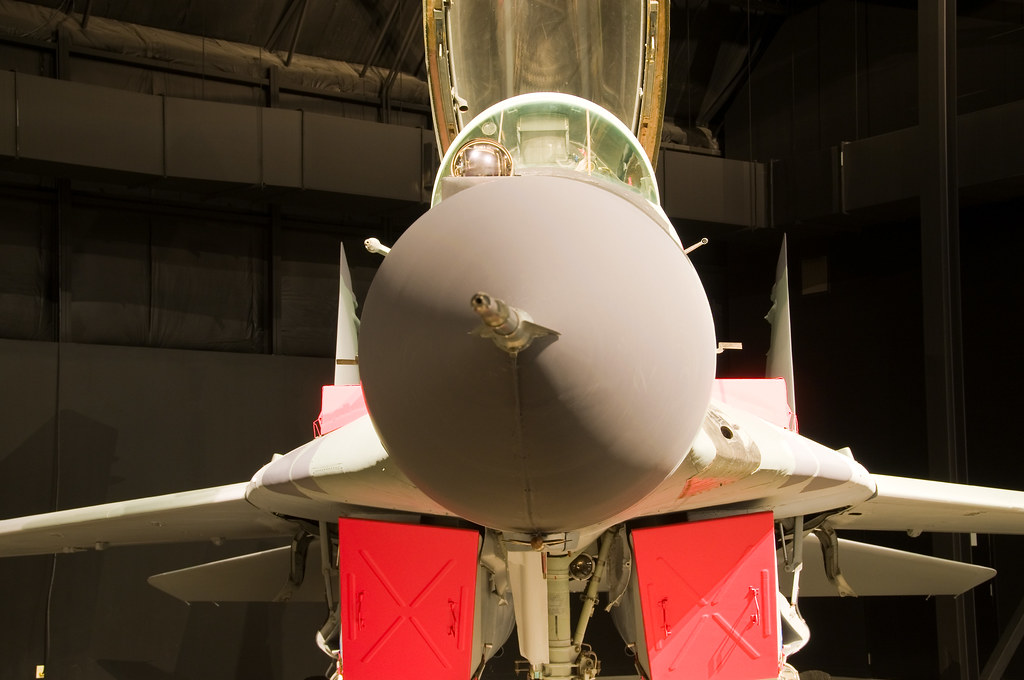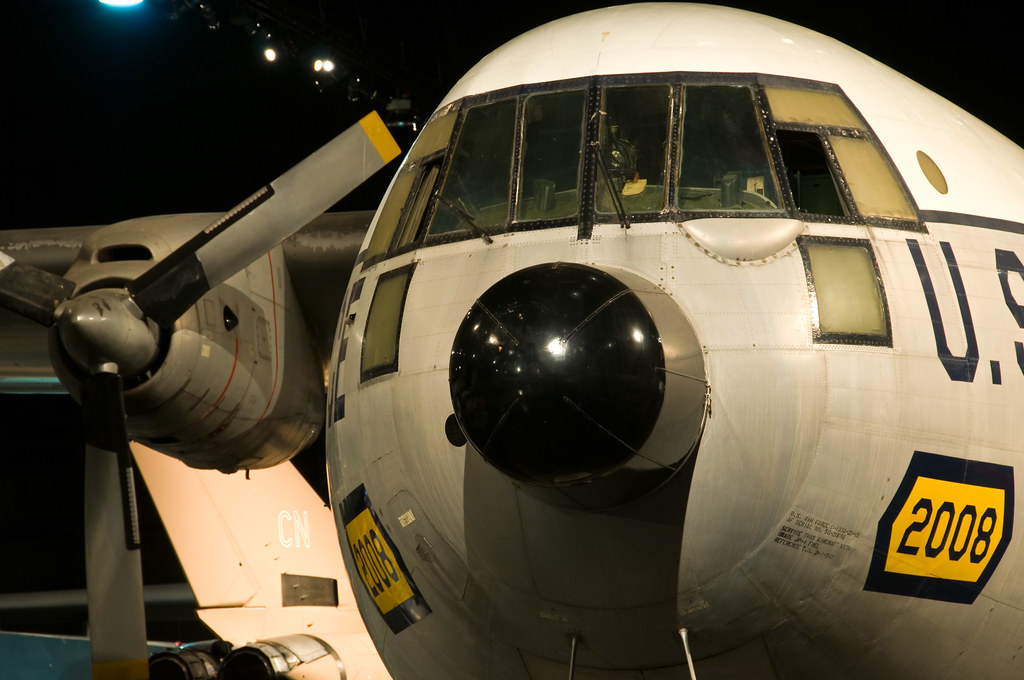
Northrop AT-38B Talon
The Northrop T-38 Talon is an American supersonic jet trainer. It was the world's first supersonic trainer and to date, is also the most produced. It remains in service as of 2009 in air forces throughout the world. The United States Air Force (USAF) is the largest user. In addition to USAF pilots, the T-38 is used by United States NASA astronauts, the U.S. Naval Test Pilot School, as well as some NATO pilots participating in a joint training program. A few are also under civilian ownership.

McDonnell Douglas RF-4C Phantom II
The McDonnell Douglas F-4 Phantom II is a tandem two-seat, twin-engined, all-weather, long-range supersonic jet interceptor fighter/fighter-bomber originally developed for the U.S. Navy by McDonnell Aircraft. Proving highly adaptable, it became a major part of the air wings of the United States Navy, Marine Corps, and Air Force. It was used extensively by all three of these services during the Vietnam War, serving as the principal air superiority fighter for both the Navy and Air Force, as well as being important in the ground-attack and reconnaissance roles by the close of U.S. involvement in the war.

General Dynamics EF-111A Raven
The General Dynamics/Grumman EF-111A Raven was an electronic warfare aircraft designed to replace the obsolete Douglas EB-66 in the United States Air Force. Its crews and maintainers often called it the "Spark-Vark," a play on the F-111's "Aardvark" nickname. In 1972, the USAF contracted Grumman to convert some existing General Dynamics F-111As into electronic warfare/ECM aircraft. The USAF had considered the Navy Grumman EA-6B Prowler, but was reluctant to adopt a Navy aircraft. After the EF-111 retired in the 1990s, the Air Force began depending on Navy and Marine Corps EA-6B squadrons for electronic warfare.

General Dynamics F-16A Fighting Falcon
The F-16 is the largest Western jet fighter program with over 4,400 aircraft built since production was approved in 1976. The Fighting Falcon is a dogfighter with numerous innovations including a frameless, bubble canopy for better visibility, side-mounted control stick to ease control while under high g-forces, and reclined seat to reduce the effect of g-forces on the pilot. The F-16 has an internal M61 Vulcan cannon and has 11 hardpoints for mounting various missiles, bombs and pods. It was also the first fighter aircraft deliberately built to sustain 9-g turns. It has a thrust-to-weight ratio greater than one, providing power to climb and accelerate vertically — if necessary.[1] Although the F-16's official name is "Fighting Falcon", it is known to its pilots as the "Viper", due to it resembling a viper snake and after the Battlestar Galactica starfighter. In addition to active, and reserve USAF units, the aircraft is used by the USAF aerial demonstration team, U.S. Air Force Thunderbirds and as an adversary/aggressor aircraft by the United States Navy.

McDonnell Douglas F-15A Eagle
The McDonnell Douglas (now Boeing) F-15 Eagle is a twin-engine, all-weather tactical fighter designed to gain and maintain air superiority in aerial combat. Developed for the United States Air Force, it first flew in July 1972, and is one of the most recognized modern fighters. The F-15 is expected to remain in service with the Air Force until 2025. The F-15's maneuverability is derived from low wing loading (weight to wing area ratio) with a high thrust-to-weight ratio enabling the aircraft to turn tightly without losing airspeed. The F-15 can climb to 30,000 ft (10,000 m) in around 60 seconds. The thrust output of the dual engines is greater than the aircraft's weight, thus giving it the ability to accelerate in a vertical climb. The weapons and flight control systems are designed so that one person can safely and effectively perform air-to-air combat. A multi-mission avionics system includes a head-up display, visible in any light condition, provides the pilot information necessary to track and destroy an enemy aircraft without having to look down at cockpit instruments.

Douglas C-133A Cargo Master
The Douglas C-133 Cargomaster was a large cargo aircraft built between 1956 and 1961 by the Douglas Aircraft Company for use with the United States Air Force. The C-133 was the USAF's only production turboprop-powered strategic airlifter, entering service shortly after Lockheed's better known C-130 Hercules. It provided airlift services in a wide range of applications, being replaced by the C-5 Galaxy in the early 1970s. The C-133 had large tail doors and side doors and a large, open cargo area. With the C-133B, the rear cargo doors were modified to open to the side (petal doors), making an opening large enough to transport ballistic missiles such as the Atlas, Titan and Minuteman more cheaply, safely and quickly than road transport. Several hundred Minuteman and other ICBMs were airlifted to and from their operational bases by C-133s. The C-133 also transported Atlas, Saturn and Titan rockets to Cape Canaveral for use as launch boosters in the Gemini, Mercury and Apollo space programs. After the Apollo capsules splashed down, they were airlifted in C-133s from Norfolk Naval Station, Virginia or Hickam AFB, Hawaii to Ellington AFB, Texas, or to California.

2 comments:
Please check the "F-15" picture.... It "looks" strange... I don't think that's an F-15
Thanks for taking the time to share this
Post a Comment